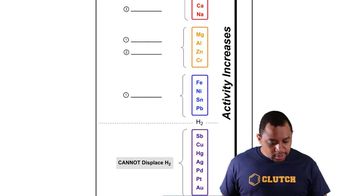Here are the essential concepts you must grasp in order to answer the question correctly.
Radioactive Decay
Radioactive decay is the process by which an unstable atomic nucleus loses energy by emitting radiation. This decay can occur in various forms, including alpha decay, beta decay, and gamma decay, leading to the transformation of the original isotope into a different element or isotope. Understanding the type of decay is crucial for predicting the behavior of isotopes in a decay series.
Recommended video:
Rate of Radioactive Decay
Decay Series
A decay series is a sequence of radioactive decays that an unstable isotope undergoes until it reaches a stable form. Each step in the series involves the transformation of one isotope into another, often through multiple decay processes. Recognizing the isotopes involved and their respective decay paths is essential for identifying the final stable product.
Recommended video:
Isotope Notation
Isotope notation is a way to represent isotopes of elements, typically denoted by the element's symbol followed by the mass number (e.g., Carbon-14 is written as ¹⁴C). This notation helps in identifying the specific isotopes involved in decay processes, including their atomic number and mass, which are critical for understanding their behavior in nuclear reactions.
Recommended video:





